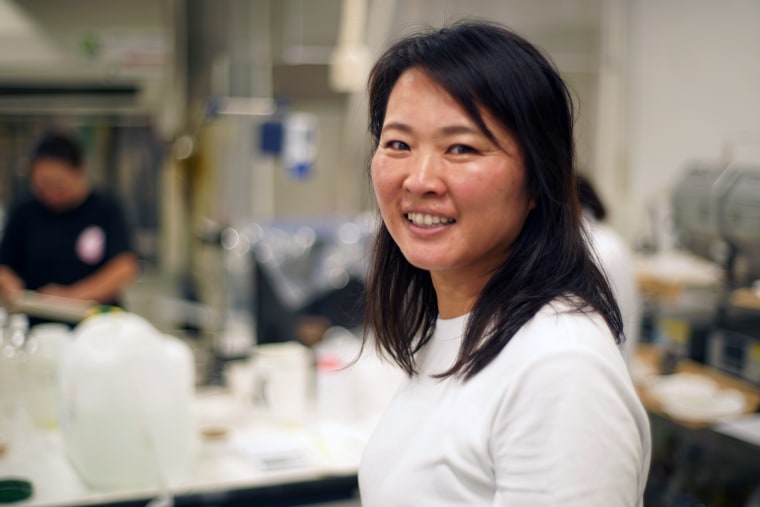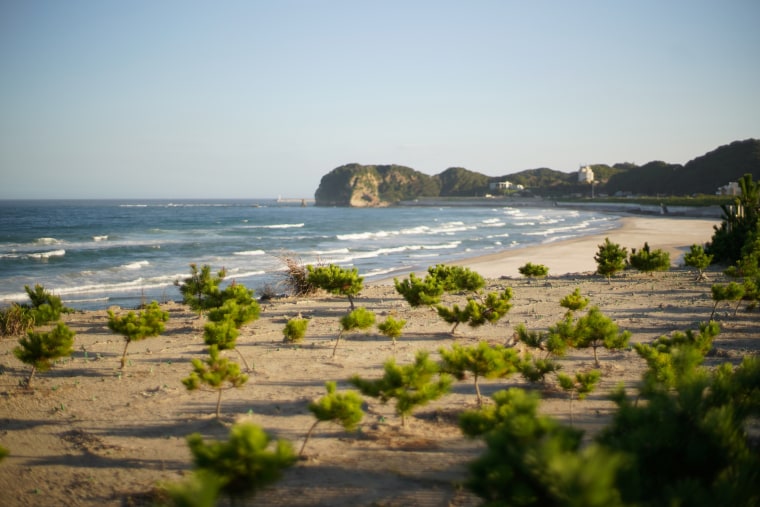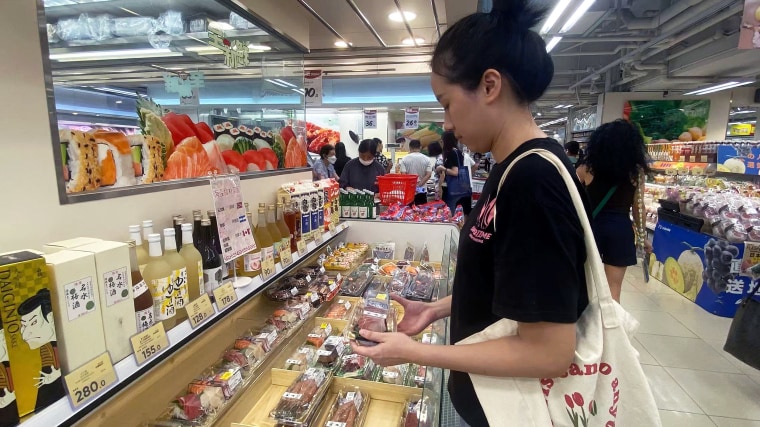IWAKI, Japan — In a laboratory on the third floor of a nondescript building here, a group of volunteers pour water from plastic jerry cans through filters into large round-bottomed vessels. Others chop up dried fish and other foods and put them into small blenders about the size of a coffee bean grinder.
These people aren’t trained scientists. They’re mothers who are worried about the legacy being left for their children after the decision to release treated radioactive water from the wrecked Fukushima nuclear plant into the Pacific Ocean.
The gradual discharge of an estimated 1.3 million metric tons of wastewater began Thursday, after repeated assurances from the Japanese government and the International Atomic Energy Agency (IAEA), the United Nations’ nuclear watchdog, that it is safe.
But around 40 miles away, in the lab where they test water samples drawn off the shore near the plant, the lab’s manager, Ai Kimura, said she was worried that the discharge might ruin the ecosystem in this area on Japan’s central-eastern coast.
“I worry about the negative legacy, which is the contamination,” Kimura, 44, told NBC News Thursday, adding that it was a “negative legacy to our children.”

The water being released, enough to fill 500 Olympic-size swimming pools and still building, has been used to cool fuel rods in the Fukushima Daiichi nuclear power plant’s reactors since a 9.0-magnitude earthquake and tsunami in 2011 set off a meltdown that spewed radioactive particles into the air in the world’s worst nuclear accident since Chernobyl in 1986, in what was then the Soviet Union.
Though the water is filtered and diluted to remove most radioactive elements, it still contains low levels of tritium, an isotope of hydrogen that is difficult to strip out.

The Japanese government and the plant’s operator, the Tokyo Electric Power Co. (Tepco), have said that the water which they say will be released over the next 30 to 40 years and is being held in hundreds of tanks on land, must be removed to prevent accidental leaks and make room for the plant’s decommissioning, more than a decade after the disaster.
Tepco, which has in the past been accused of a lack of transparency, has vowed to put safety first and stop the discharges if problems arise.
Shortly after the first batch of Fukushima water was discharged on Thursday, the IAEA said that its on-site analysis confirmed that the levels of tritium were “far below” the operational limit.
State Department spokesperson Matthew Miller said Friday that the United States was also satisfied with Japan’s “safe, transparent, and science-based process.”
There have nonetheless been loud objections from neighboring countries, including China, where customs authorities announced an immediate ban on all imports of Japanese “aquatic products,” including seafood, to “comprehensively guard against the risk of radioactive contamination to food safety caused by nuclear-contaminated water discharges.”
Although the South Korean government reiterated this week that it sees no scientific or technical issue with the water’s release, police in the country on Thursday arrested 16 protesters accused of trying to break into the Japanese Embassy in the capital, Seoul.

But according to data posted online by the Japanese Ministry of Economy, Trade and Industry, water with much higher levels of tritium has been discharged by nuclear facilities in countries including China, South Korea, Canada and France in line with local regulations.
In the area around the Fukushima plant the impact of the disaster is eerily clear. Three miles away, in the town of Futaba, many of the abandoned houses look like they haven’t been touched since the day of the earthquake.
Curtains flap through broken windows, pictures and clocks are still on the walls and debris is strewn all over. Cars and bicycles are covered in dust.
Back in the lab, which operates as a nonprofit called Tarachin and funds its state-of-the-art equipment with donations, Kimura said that its testing had confirmed that radiation levels in agricultural products and the ocean in the accident region had been decreasing gradually.
But she said she feared the discharge might ruin the promising future of this area’s ecosystem.
“If the treated water is once again discharged, we believe that the same tragedy from 12 years ago will be repeated,” she said.
Janis Mackey Frayer reported from Fukushima, and Larissa Gao from Hong Kong.
Source: | This article originally belongs to Nbcnews.com









